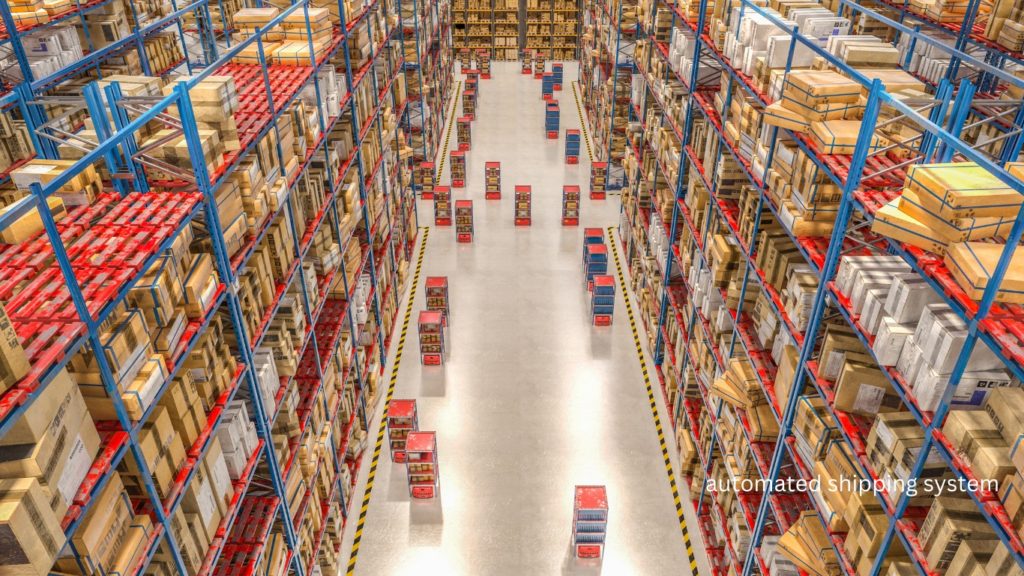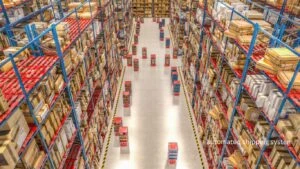Consumers today expect fast, efficient, and on-time deliveries, putting immense pressure on businesses to keep up.
How are companies keeping up with these expectations? Technology and automation is the answer.
Automated shipping system play a crucial role in optimizing last-mile logistics, which has become more important than ever.
Customers want speed and accuracy, and businesses that fall short risk losing out. By embracing shipping automation, companies can streamline their processes, cut costs, and boost customer satisfaction.
This blog will break down what automated shipping is, why it matters, and how it can help businesses stay competitive.
Keep reading to learn more!

Automated Shipping: What It Is?
Automated Shipping or Ship Automation in other words leverages technology to streamline and optimize different parts of the shipping process, reducing human errors and improving efficiency.
Here’s how it works:
- Generates shipping labels, picking lists, and packing slips automatically, without human intervention.
- Tracks and monitors shipments in real-time ensuring visibility throughout the process.
- Optimizes delivery routes and driver schedules to reduce delivery times, cut transportation costs, and enhance customer satisfaction.
By automating these tasks, businesses can:
- Achieve greater operational efficiency.
- Lower shipping costs.
- Deliver a superior customer experience.
In turn, this boosts their competitive edge in the market.
Automated Shipping System: How Does It Work?
Automate shipping processes use a mix of hardware and software to simplify the shipping process.
Here’s a breakdown of how it works:
Order processing
The system connects with e-commerce platforms to automatically pull in order details. It then processes the information, creates a shipping label, and assigns a tracking number.
Inventory management
It syncs with inventory systems to monitor stock levels, ensuring items are ready to ship.
Package preparation
Machines handle packaging, print shipping labels, and add barcodes or RFID tags when needed.
Transportation
The system arranges transportation using trucks, drones, or even autonomous vehicles to get packages to their destination.
Tracking and delivery
Customers receive real-time tracking updates and notifications about the status and delivery of their shipments.
Some systems also use technologies like AI, machine learning, and predictive analytics to make the shipping process even more efficient and identify potential improvements.
Now let’s move on to the benefits of using an automated shipping tool for your business.
Benefits of Using Shipping Automation Software For Your Business
More Savings
Automating shipping processes cuts down on labor costs, reduces the chances of errors, and improves supply chain efficiency, resulting in valuable time and cost reductions.
Quicker Order Processing and Delivery
Automated systems handle orders faster and more accurately, enabling businesses to offer quicker deliveries, which enhances customer satisfaction and loyalty.
Better Customer Experience
Customers enjoy accurate delivery forecasts, real-time tracking updates, and faster shipping, leading to greater satisfaction and repeat purchases.
Less Human Errors
Automation removes manual handling mistakes in order processing, inventory management, and shipping, ensuring fewer expensive errors.
Continuous Tracking and Monitoring
Automated systems provide constant shipment tracking, allowing businesses and customers to monitor packages and quickly resolve any problems.
Flexibility and Scalability
These systems can easily adapt to growing demand, making them perfect for businesses experiencing seasonal sales variations.
Boosted Efficiency
Automated shipping systems improve speed and accuracy, enabling businesses to manage larger volumes without hiring extra personnel.
Eco-Friendly Practices
Automated shipping reduces transportation costs and packaging waste by optimizing delivery routes, helping lower the carbon footprint.
Key Types of Automated Shipping Technologies
Automatic shipping solutions are basically the automated shipping tool
that makes shipping easier and more efficient. They include automated systems for packaging, labeling, and sorting, which help shipping companies work faster, cut down on labor costs, and reduce mistakes.
Automated packaging systems
These systems handle packaging tasks like filling, sealing, labeling, and organizing packages for shipment. They save time, lower labor costs, and may include features to measure weight and size, helping to reduce shipping expenses.
Automated labeling systems
These systems quickly print and apply shipping labels with high accuracy, which is important for large shipping operations. Some systems also include barcode scanning and RFID technology to make inventory tracking easier.
Automated sorting systems
These systems use technology like conveyor belts, robots, and sensors to sort packages by destination. They increase accuracy and efficiency, especially in big operations, and some systems also check for quality and track packages to improve the process further.
The Future Of Shipping Automation: A Look Ahead
Shipping automation software is expected to play a crucial role in the future of transportation, gaining more importance and influence.
- With the development of new technologies like autonomous vehicles and drones, shipping companies are seeking ways to automate their operations to:
- Boost efficiency
- Reduce costs
- Improve safety
- One key advantage of shipping automation software is its ability to enable nonstop operations by:
- Removing the need for breaks or rest periods
- Allowing 24/7 functionality
- This can lead to:
- Significantly reduced delivery times
- A higher number of deliveries each day.
FAQs: How Automated Shipping Systems Work and Why They’re a Must-Have
Is an automated shipping system good for international shipping?
It depends on your business and how you operate. But yes an automated system can be very useful for international shipping because it simplifies the process by offering real-time tracking of shipments, handling customs paperwork, and automatically choosing the most affordable and reliable shipping options.
What are the challenges of an automated shipping system?
Some challenges include the high costs of implementation, difficulties in integrating the new system with existing processes, and potential technical issues that may arise. Managing exceptions can also be challenging, as can navigating the complex shipping regulations.
What are the costs of setting up automated shipping systems?
The expenses can differ based on the system’s complexity and size, covering initial setup, integration with current systems, and ongoing maintenance.
Conclusion
The shipping industry has experienced significant changes thanks to advancements in automation technology. With the use of autonomous vehicles, drones, and advanced robotics, shipping companies have seen major improvements in efficiency and cost savings.
At QodeNext, we recognize how automated packaging, labeling, and sorting systems have enhanced both the accuracy and speed of shipping processes.
Automated shipping solutions will undoubtedly remain crucial to the transportation sector. As companies continue to embrace these technologies, we can expect even higher levels of efficiency, faster delivery times, and a better overall shipping experience for businesses and consumers alike.







